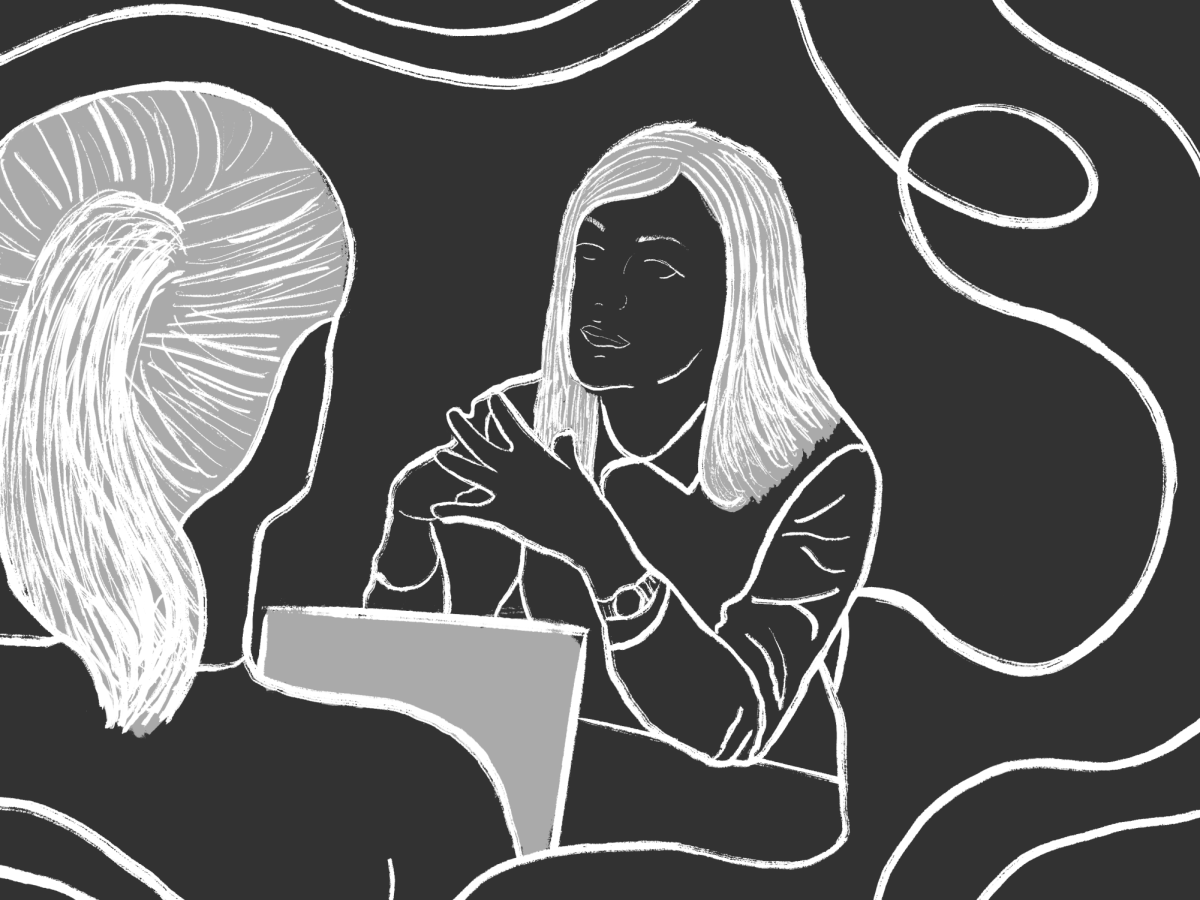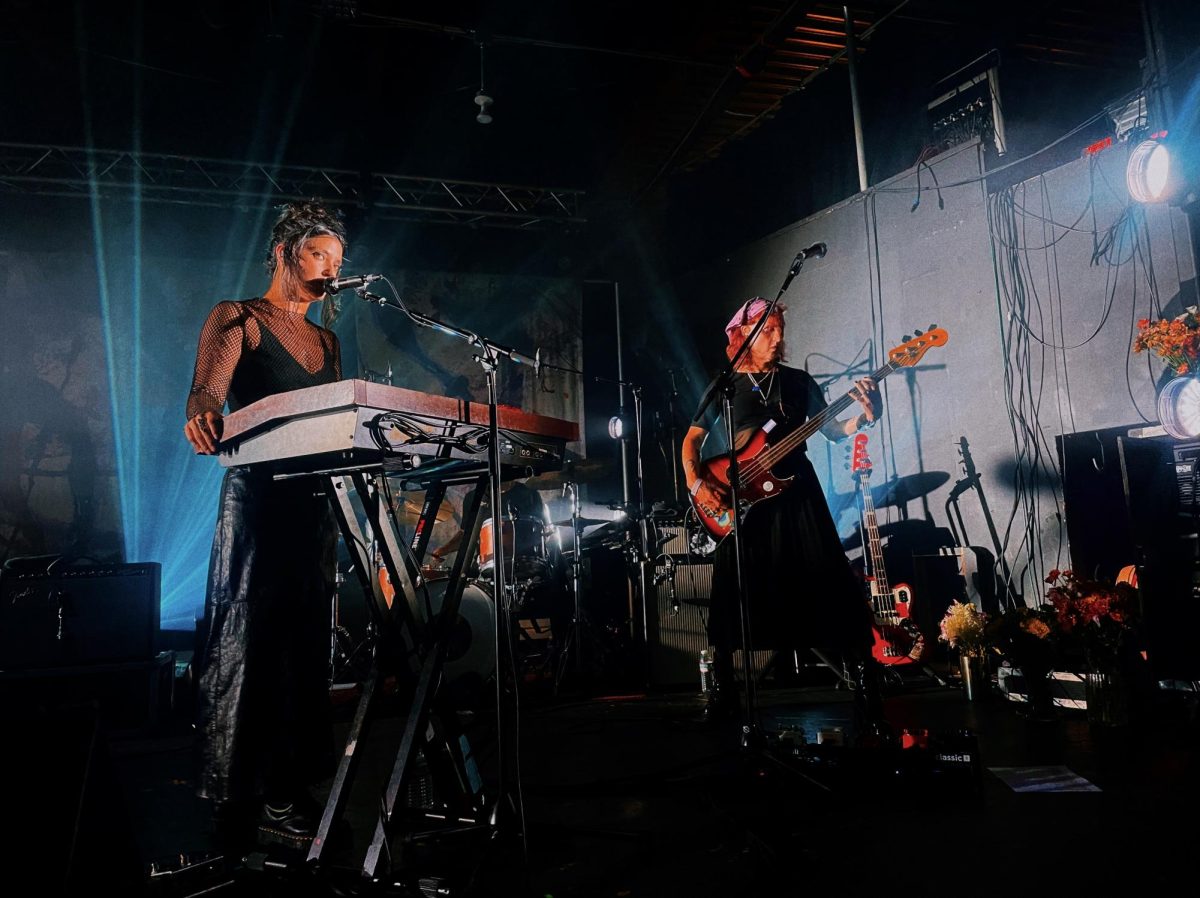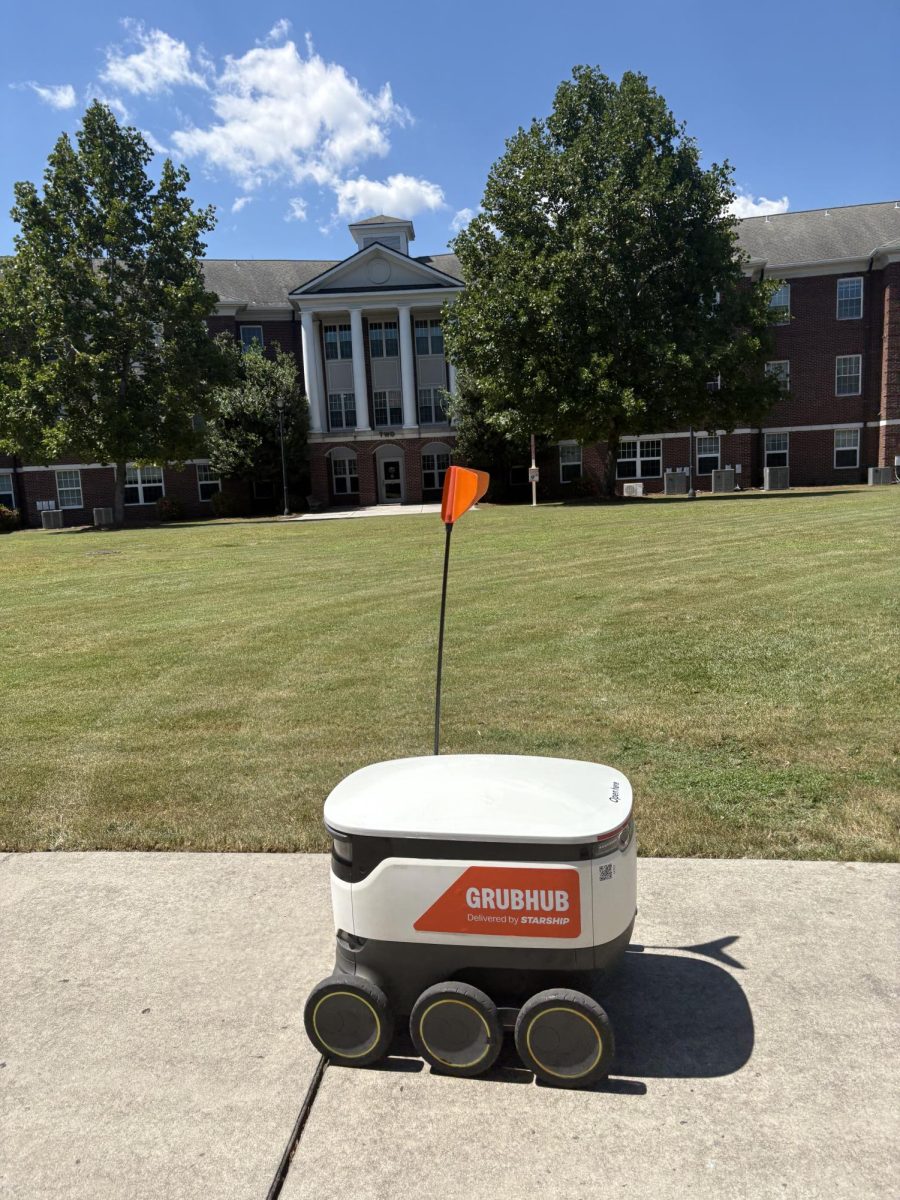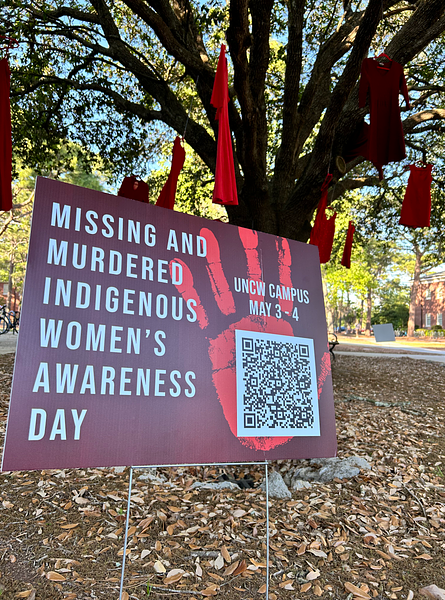
Red dresses hang from trees outside of Randall Library flowing in the wind. The dresses stand out unnaturally against the brick building and freshly bloomed trees. Dr. Menaka Raguparan, a fellow of diversity, equity and inclusion (DEI), installed this project to raise awareness of murdered and missing Indigenous women (MMIW).
“I wanted to do it in the proper way and not in a symbolic way,” said Raguparan. “I wanted a conversation around it.” Raguparan studies sex and gender, sociology and criminology at the University of North Carolina Wilmington.
A 2016 study conducted by the National Institute of Justice (NJI) found that 84.3 percent of American Indian and Alaska Native women have experienced violence in their life, including 56.1 percent who have experienced sexual violence. Statistics show that approximately 1,500 American Indian and Alaska Native missing persons have been recorded by the National Crime Information Center (NCIC) throughout the U.S. and 2,700 cases of murder and nonnegligent homicide have been reported by the Federal Government’s Uniform Crime Reporting program in 2016. The Bureau of Indian Affairs has reported that approximately 4,200 missing and murdered cases have gone unsolved.
“Indigenous women are easy targets because no one is looking for them,” Raguparan said.
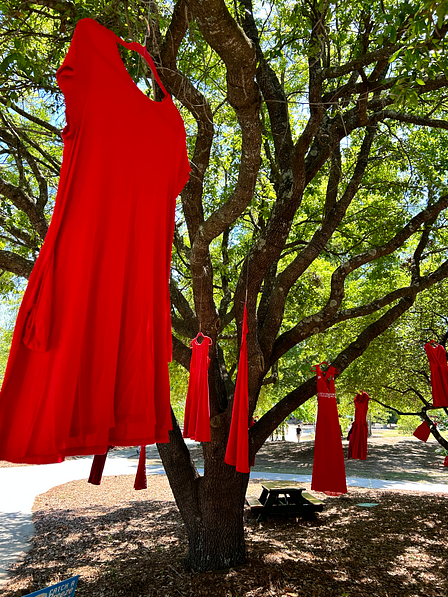
Raguparan began studying MMIW after viewing the REDdress outdoor installation in 2019 by Jaime Black that was located in Washington, D.C. This is not the first installation of the REDdress project on UNCW campus. Raguparan explained how the majority of murdered and missing indigenous women are located in Canada and the borders of the United States.
“Unfortunately they [women] are found dead in different cities and borders,” said Raguparan.
“I have been working on this issue for a long time,” said Raguparan. “Most of the sex workers go missing and most of them are indigenous women. When you go to the police and report these women, they say ‘That is just their way of life.’ But it is a normal conversation,” said Raguparan.
Raguparan referenced how victims are misidentified due to police not knowing how to properly identify indigenous women. With the lack of identification for ingenuous women, there are many cases that could have been solved. In addition, there is conflict between tribal police and county police, making identification more difficult.
“It is a silent topic,” said Raguparan. “It is a silent issue because it is silent in the media, silent in data, and silent in phenomenon.”
Raguparan recognized how there is questioning and doubt around whether this topic is a real issue.
“The idea is to raise awareness and to get people talking,” said Raguparan. The red dress evokes an emotion of sadness as the red symbolizes blood. “Different size dresses symbolize that it is not just women but there are girls and children that are missing,” said Raguparan.
May 5 is the official MMIW day and is celebrated widely across the U.S. and Canada. Raguparan expressed how important it is to be involved, ask questions, and keep informing others.
“We want to break that silence and we want to get people talking about it and raise awareness,” said Raguparan.



